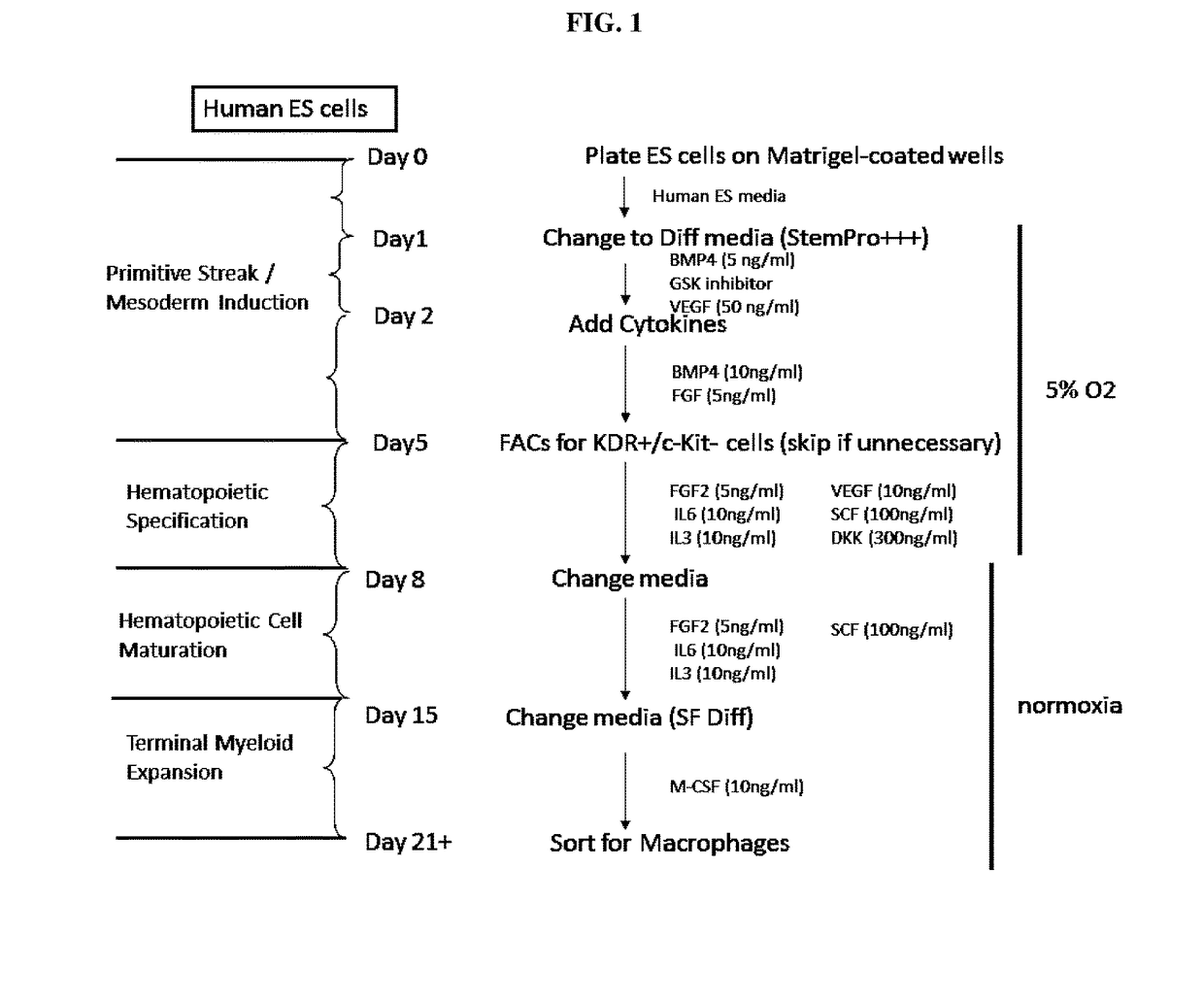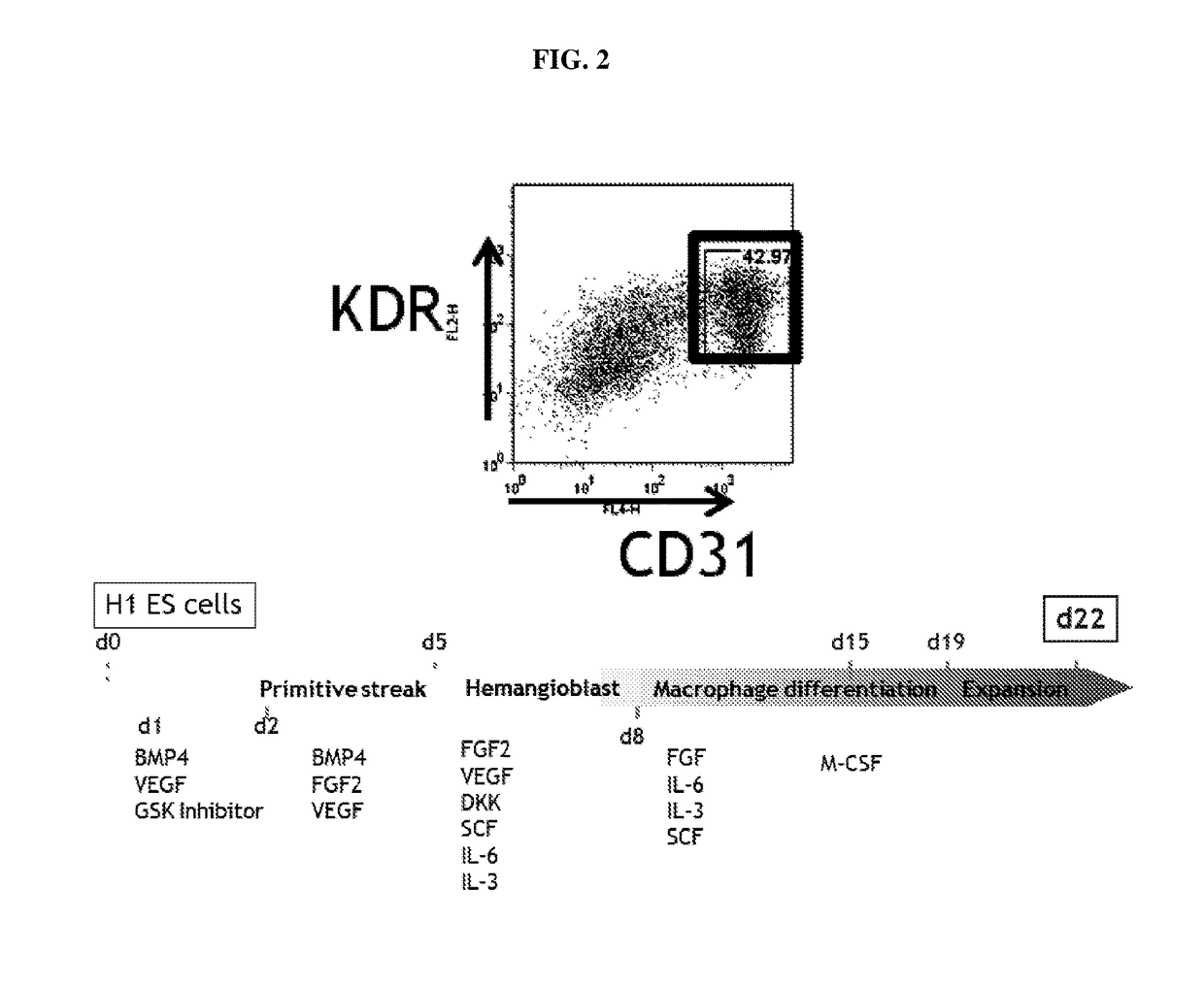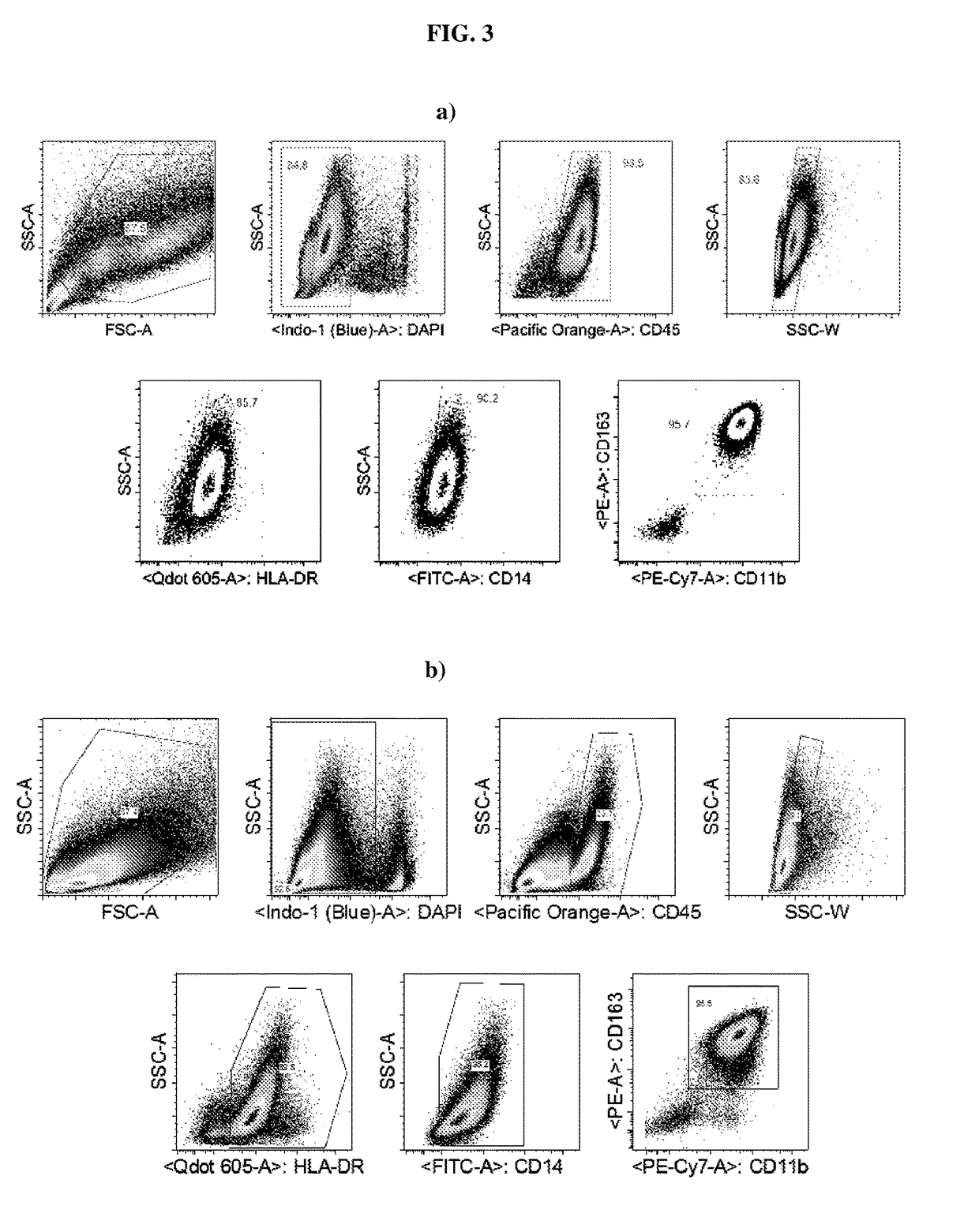Differentiation of macrophages from pluripotent stem cells
- Summary
- Abstract
- Description
- Claims
- Application Information
AI Technical Summary
Benefits of technology
Problems solved by technology
Method used
Image
Examples
example 1
[0064]Differentiation of Mouse Pluripotent Stem Cells into Primitive Macrophages
[0065]If mESC / miPSC are expanded on MEF, deplete MEF by 1-2× passage on gelatin-coated 6-well plates before commencing with differentiation.
[0066]On day 0, colonies are dissociated and resuspended at 175,000-200,000 cells / ml in serum-free differentiation medium (recipe below) supplemented with 5 ng / ml hFGF2 and 5 ng / ml hBMP4. These are dispensed into non-adherent plates to allow for embryoid body (EB) formation.
[0067]After 48 h, EBs are pooled and dissociated with TrypLE (preferred) or Trypsin.
[0068]EBs are then reaggregated at 175,000 cells / ml in serum-free differentiation medium supplemented with 5 ng / ml hFGF2, 2 ng / ml hBMP4, 2 ng / ml human Activin A, 5 ng / ml hVEGF.
[0069]After a further 48 h, EBs are dissociated and sorted for Flk-1+ cells.
[0070]Sorted cells are then reaggregated at 500,000 cells / ml in serum-free differentiation medium supplemented with 5 ng / ml VEGF, 300 ng / ml DKK1, 100 ng / ml M-CSF. The...
example 2
[0079]Differentiation of Human Pluripotent Stem Cells into Primitive Macrophages
[0080]The differentiation strategy can be divided into four stages: primitive streak / mesoderm induction, hematopoietic specification, hematopoietic cell maturation, and finally terminal myeloid expansion. The experimental details of each stage are illustrated in FIGS. 1 and 2, and described below:
[0081]Stage 0: ES or iPS cells are maintained on Matrigel-coated dishes in CF1 MEF-conditioned media. The media recipe consists of 80% DMEM / F12, 20% knockout serum replacement, L-glutamine, non-essential amino acids, beta-mercaptoethanol, and 6 ng / ml FGF-2 and media is replaced daily. Cells are passaged every 5-6 days using collagenase IV treatment and gentle detachment with a cell scraper. 24 hours prior to initiation of differentiation, cells are plated at a very low density (2 on Matrigel-coated 6-well plates and allowed to attach overnight.
[0082]Stage 1 (primitive streak / mesoderm induction): In this initial ...
example 3
[0096]Differentiation of Human iPSC-Derived Primitive Macrophages
[0097]Phagocytosis assays were performed with day 12-sorted iPSCs-derived primitive macrophages (CD163+CD11b+HLA-DR+IBA-1+CX3 CR1+CD14+), wherein the macrophages have been differentiated from patient derived WT iPSCs and the expression profile is CD45+ CD11b+, and CD163+. Specifically, the day 12-sorted iPSCs-derived primitive macrophages were exposed to fluorescently labeled latex beads or amyloid Aβ peptides in order to assess their capacity to phagocyte as macrophages and microglia.
[0098]As shown in FIG. 4, the capacity of said iPSC-derived primitive macrophages to phagocyte as macrophages and microglia is supported. This is of importance since amyloid beta (Aβ or Abeta) peptides are crucially involved in Alzheimer's disease as the main component of the amyloid plaques found in the brains of Alzheimer patients.
[0099]Procedure
[0100]The method for the analysis of macrophage phagocytic ability used a control line of Hu...
PUM
 Login to View More
Login to View More Abstract
Description
Claims
Application Information
 Login to View More
Login to View More - R&D
- Intellectual Property
- Life Sciences
- Materials
- Tech Scout
- Unparalleled Data Quality
- Higher Quality Content
- 60% Fewer Hallucinations
Browse by: Latest US Patents, China's latest patents, Technical Efficacy Thesaurus, Application Domain, Technology Topic, Popular Technical Reports.
© 2025 PatSnap. All rights reserved.Legal|Privacy policy|Modern Slavery Act Transparency Statement|Sitemap|About US| Contact US: help@patsnap.com



